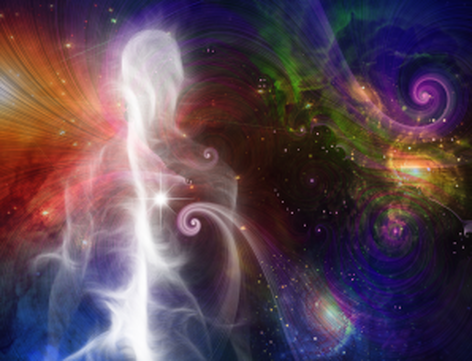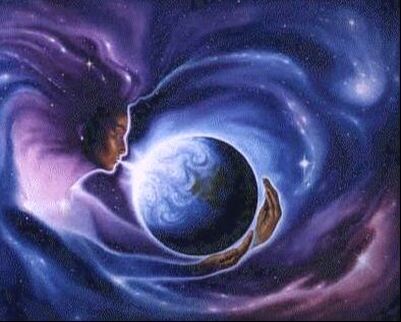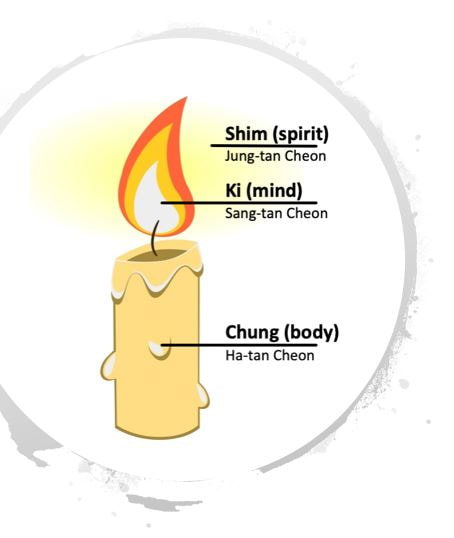Harnessing Life Force: The Power of Jung Qi Shin Samdanjeon
|
The idea of “life force” has fascinated human beings from the earliest days of prehistory to the modern age. We know it’s something important — it’s what allows us to be alive as a part of the natural world. We know countless intellectuals and nearly all world religions have explored the mysterious concept — but what is it, exactly?
In this month’s blog we’ll take a closer look at the idea of life force. After considering related terms framed by many different historical, cultural, philosophical, and religious traditions, we’ll then turn our attention to the insights of Korea’s ancient SunDo Taoist lineage through its life force concept of Jung, Qi, and Shin. |
A divine origin
For many, particularly in Western history, the notion of life force is something “holy.” Holy comes from the old Scandinavian hälig, not to be harmed — or in pristine form. Generally in Christian traditions holy is thought of as something untainted and deserving of reverence. We might describe life force in a similar way as something pure and sacred to the integrity of life, which must be preserved. We’ll discuss how this relates to the Eastern perspective on it in our description of SunDo’s life force below.
Theologians and philosophers across cultures have also thought of life force as a spark of divinity present in all living things — a light inside, if you will. In the Greek myth of Prometheus, Light, which in many mythologies is nearly synonymous with the sun and fire, was stolen from the heavens and gifted to man. It is also God’s first creative action in the Judeo Christian bible — let there be light. And God, of course, saw that it was good. In Eastern thought, light is tied to the expansion of human consciousness, or a higher state of enlightened existence. In the harsh conditions of prehistoric times, light was also thought of as far preferable to dark and represented liberation from danger and helplessness. Life force like light, was thought a divine power that brings freedom.
The breath of life
The connection between breath and life force runs deep in spiritual and even scientific thought. We can see this in the linguistic roots of the word “inspiration,” which contains the root for the Latin verb spirare, which means to breath. Accordingly, inspiration, the experience that creates an uplifting, life-giving feeling, is something we “breathe in” from the world around us. This sacred feeling drives us to action, most often creative acts of expression, but sometimes religious as well.
What we breathe in, of course, is oxygen. Oxygen was discovered in the 1770s by English theologian and natural philosopher Joseph Priestley, and even prior to its formal discovery, the essential element was associated with light and fire for its role in combustion. Spiritual historian Stefan Stenudd theorizes that many beliefs in life force may have been attempts to explain the necessity for living creatures to breathe in a vital invisible substance in the air. Nearly all cultures have had names for this unseen conduit to life force — prana in Hinduism, ruach in Jewish mysticism, spiritus in Roman antiquity, pneuma in Ancient Greek philosophy, and qi in Eastern thought, as we’ll discuss shortly.
|
Beyond the physical The terms above paint a picture, in part, of a life force that goes beyond the corporeal — a “life spirit” of sorts — an essence of living things that both grants and sustains life, yet is somehow distinct from physical systems. Spirit is a concept that comes very close to that of life energy, having both a concrete and abstract meaning. Its physical quality is connected to the bodily breathing of air, as we discussed above, while the latter is more mystical nature — the concept and essence of the self that isn’t physical. |
Spirit and soul are often used interchangeably in conversation, but generally the soul, in Western thought is believed to be closely linked to the emotions and, thus, is more intimately connected to the body, while the spirit resembles the enigma of the intangible conscious mind. In most belief systems the body and soul are with us while alive, but the spirit — a conscious awareness separate from the physical — endures even after death.
The concept of life force in SunDo
The multi-dimensional nature of living beings is a common thread between Eastern and Western ideas of life force. In the New Testament Paul described the human being as consisting of three parts: spirit, body, and soul. Thousands of years before Paul was even a name anyone spoke, the ancient practice of Kouksundo (referred to in the modern world as SunDo) was created to harness life force through the development of the body (jung), mind (qi), and spirit (shin).
|
Through the ancient and timed-honored practice of SunDo one was able to preserve his or her own health, promote longevity, and unlock the highest potential in oneself. The life force concept in SunDo is called Jung Qi Shin Samdanjeon. In this theory, the energy of the human body is Jung, the energy of the mental alertness and concentration is Qi, and the divine spirit and character of living things is Shin. The health of each of these elements are deeply interconnected and all need to be developed to create the most pure life force. We might think of life force in the SunDo tradition as the vital and ideal synergy between the body, mind, and spirit. The result of this pure life force is optimal physical strength, mental health, and moral maturity. Thus, SunDo gives practitioners a path to accessing and improving the entirety of their being. |
Get e-newsletters five times a year with the latest SunDo blogs, upcoming retreats and more!



